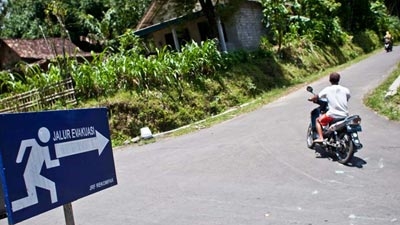Jakarta, November 12, 2012 - Hurricane Sandy recently ravaged the eastern coast of the United States, killing nearly 100 people and causing widespread damage. This was a stark reminder of the risk of disasters that are part of daily life around the globe. Perhaps the most tragic experience has been that of Indonesia. In 2004, Indonesia lost over 200,000 people when a tsunami swept into Aceh – most people remember the moment they heard and saw the news of the East Asia tsunami. A few months later, Nias was devastated by an earthquake. A little more than a year later, over 6,000 people in Java lost their lives in earthquakes and tsunamis. In 2010, Mount Merapi erupted, destroying houses and habitats barely recovering from the last disaster. Because of Indonesia’s location in a geologically active part of the world, it will always be prone to natural disasters, and its people will always be at risk.
The MDF and JRF setting the standard for Indonesian disaster response
But there is an upside: these deadly natural disasters have reshaped Indonesia’s approach to disaster response and preparedness, and made communities more resilient. Months after the tsunami struck, the Government of Indonesia established the Multi Donor Fund for Aceh and Nias (MDF) to coordinate donor support for the reconstruction and rehabilitation of Aceh and Nias. Donors pooled $655 million in grant funds with the World Bank serving as Trustee.
The MDF set the standard for Indonesian disaster response. Its portfolio followed a phased approach designed to meet the changing needs of disaster survivors throughout the recovery process: first rebuilding houses and communities, then focusing on infrastructure, and finally laying the foundations for economic growth. The program was led by government, and communities had major input in the process. Environmental sustainability, gender, capacity building and disaster risk reduction were important cross-cutting elements of the MDF program throughout its life cycle.
The MDF also established a replicable model for disaster response which was quickly put to the test in Java in 2006. The Java Reconstruction Fund (JRF) was set up along the same lines as the MDF. As in Aceh, the JRF was a government-led partnership with multiple donors. It also followed a phased approach with strong community input. And it was also a success. Houses and communities were restored. Livelihoods were re-established with provision of skills training and access to finance. The JRF even restored lost assets to viable firms so that they could re-establish themselves.
By the time Mount Merapi erupted in 2010, the JRF was well-positioned to take on the job of recovery. The program was expanded to include the victims of the volcano. Having the JRF framework in place meant that the recovery was quick and efficient.
The Government adopts elements of MDF and JRF
There hasn’t been a major disaster in Indonesia since then. But it’s only a matter of time before the country will turn to the MDF and JRF’s experience to tackle another catastrophe. The Indonesian government will be ready. It has already adopted key elements of the MDF/JRF model and strategic framework in its policies, for example, by using the community-led approach in disaster risk mitigation.
To address future disasters with similar speed and efficiency, the government set up the Indonesia Multi Donor Fund Facility for Disaster Recovery (IMDFF-DR). It draws from its experience with the MDF and JRF, operating through two windows managed by the World Bank and the United Nations. Its partners have shown interest; already, New Zealand has donated funds to get it started.
Indonesia’s experience holds promise for any country at risk of natural disasters. On November 12, it will hold a major international conference to share the knowledge and experience learned from the MDF and JRF. The lessons, learned through the costly and painful recovery from horrifying disasters, will ensure that a legacy of resilience and preparedness will endure into the future.


